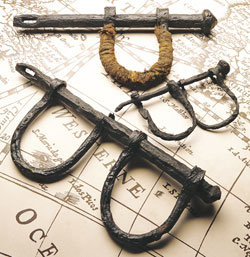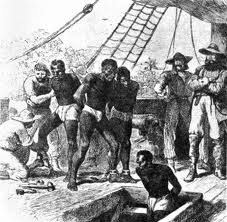We Still Can’t See American Slavery for What It Was
Share
Explore Our Galleries
Breaking News!
Today's news and culture by Black and other reporters in the Black and mainstream media.
Ways to Support ABHM?
By Jamelle Bouie, New York Times

It is thanks to decades of painstaking, difficult work that we know a great deal about the scale of human trafficking across the Atlantic Ocean and about the people aboard each ship. Much of that research is available to the public in the form of the SlaveVoyages database. A detailed repository of information on individual ships, individual voyages and even individual people, it is a groundbreaking tool for scholars of slavery, the slave trade and the Atlantic world. And it continues to grow. Last year, the team behind SlaveVoyages introduced a new data set with information on the domestic slave trade within the United States, titled “Oceans of Kinfolk.”…
After nearly 10 years as physical media, SlaveVoyages was introduced to the public as a website in 2008 and then relaunched in 2019 with a new interface and even more detail. As it stands today, the site, funded primarily by grants, contains data sets on various aspects of the slave trade: a database on the trans-Atlantic trade with more than 36,000 entries, a database containing entries on voyages that took place within the Americas and a database with the personal details of more than 95,000 enslaved Africans found on these ships.
The newest addition to SlaveVoyages is a data set that documents the “coastwise” traffic to New Orleans during the antebellum years of 1820 to 1860, when it was the largest slave-trading market in the country. The 1807 law that forbade the importation of enslaved Africans to the United States also required any captain of a coastwise vessel with enslaved people on board to file, at departure and on arrival, a manifest listing those individuals by name.
[…]

Because of its specificity with regard to individual enslaved people, this new information is as pathbreaking for lay researchers and genealogists as it is for scholars and historians. It is also, for me, an opportunity to think about the difficult ethical questions that surround this work: How exactly do we relate to data that allows someone — anyone — to identify a specific enslaved person? How do we wield these powerful tools for quantitative analysis without abstracting the human reality away from the story? And what does it mean to study something as wicked and monstrous as the slave trade using some of the tools of the trade itself?
Read the full article here to find out.
Read more about the conditions during the Middle Passage voyages here.
More Breaking News here.









Comments Are Welcome
Note: We moderate submissions in order to create a space for meaningful dialogue, a space where museum visitors – adults and youth –– can exchange informed, thoughtful, and relevant comments that add value to our exhibits.
Racial slurs, personal attacks, obscenity, profanity, and SHOUTING do not meet the above standard. Such comments are posted in the exhibit Hateful Speech. Commercial promotions, impersonations, and incoherent comments likewise fail to meet our goals, so will not be posted. Submissions longer than 120 words will be shortened.
See our full Comments Policy here.